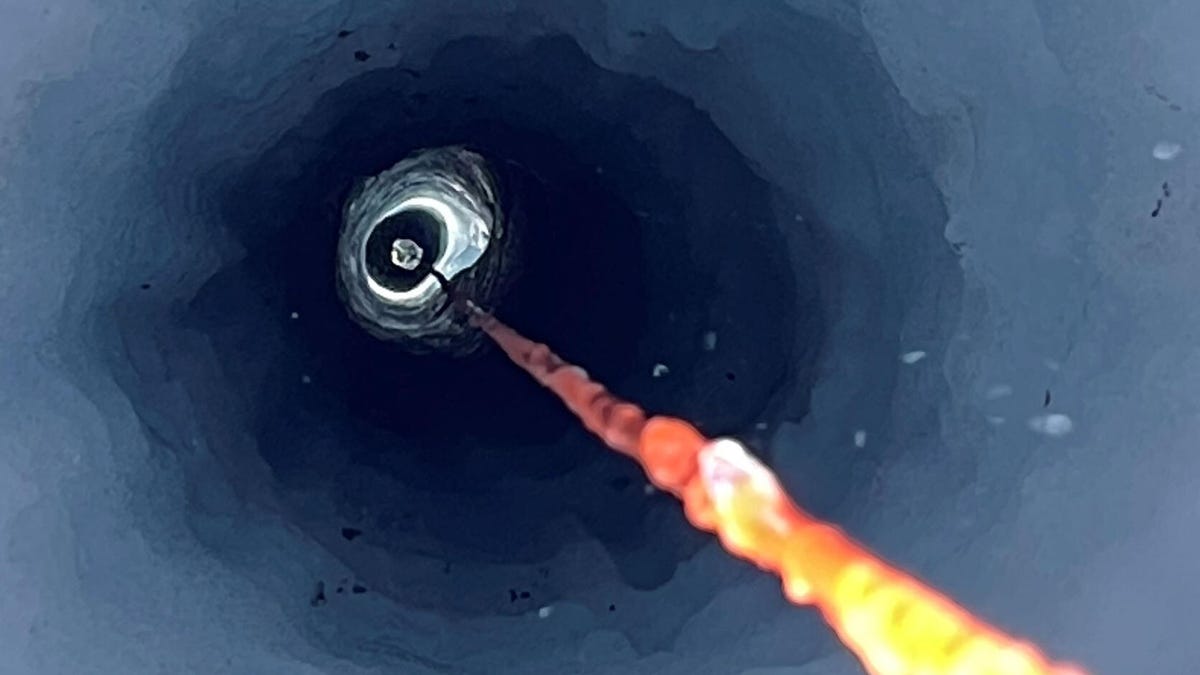Beneath Antarctica, Scientists Discover River Full of Marine Life
After melting a hole through the Ross Ice Shelf, scientists make a surprising find.

Underneath the Ross Ice Shelf in Antarctica, scientists have unexpectedly stumbled upon a thriving ecosystem.
Antarctic scientists have opened a portal to a world of tiny crustaceans thriving in a salty estuary some 1,600 feet below the Ross Ice Shelf, the largest shelf in the Antarctic.
New Zealand scientists with the National Institute of Water and Atmospheric Research melted through the shelf with a hot water hose until they discovered an under-ice river up to about 6.5 miles long, a little over 300 yards wide and 800 feet deep. "Imagine Sydney Harbor but under 600 meters [2,000 feet] of ice and snow," said Craig Stevens, an oceanographer with NIWA. Down there, it's completely dark -- too far down for sunlight to reach -- and extremely cold.
Not the ideal spot for life to, uh... find a way.
But when they lowered some recording equipment, they were surprised to find the river was full amphipods. The shrimplike crustaceans flittered about the place, illuminated only by the camera lights.
A world of amphipods hidden beneath the ice.
In a report by NIWA, Stevens said that "seeing one of these things would have you leaping up and down for joy. We were inundated."
"Having all those animals swimming around our camera means there's clearly an important ecosystem process happening there, which we will do more research on by analyzing water samples to test for things like nutrients," he added.
Stevens told CNET that, at times, there were "absolute hordes" of the swimmers buzzing around the place. But other recording runs in the river turned up far fewer creatures. This variability, he notes, is "part of the excitement."
The worlds beneath Antarctica remain a mysterious place because accessing these under-ice rivers or the water column is particularly difficult. You have to battle the weather and drill or melt through thick ice to send down drones or camera equipment. That's why Ernest Shackleton's famous ship, the Endurance, remained lost for over a century -- it's really hard to travel to these worlds beneath the ice. But once you crack through that formidable barrier, endless bounties await.
"To some extent, everything is so new we can just lower a camera on a rope and get never-before-seen scenes," Stevens said.
In 2021, Antarctic researchers with the British Antarctic Survey discovered unusual lifeforms at a depth of around 4,000 feet: strange "suspension feeders," such as sponges, cuddled up to a rock at the abyssal depths. Their discovery took place on the opposite side of the continent, underneath the Filchner-Ronne Ice Shelf, and it was something of a surprise — while mobile creatures are known to occupy the pitch-black Antarctic ocean bottom, it's unexpected to find stationary creatures surviving in the nutrient-poor zones.
A similar question arises for the amphipods discovered beneath Ross. "What is supplying the nutrients?" said Stevens, adding "that's probably the thing intriguing us most about this."
It's a pertinent time to be discovering never-before-seen hotspots of Antarctic life and asking these types of questions. Parts of the continent are warming faster than anywhere else in the world, which could inspire alien species to move in, damaging a fragile ecosystems that has long been isolated from the rest of the world.
Stevens noted that the first step in understanding how important these under-ice estuaries might be to Antarctica is to work out their similarities to and differences from normal estuaries. The team plans to analyze water samples and test for nutrients, which could reveal how life thrives so far from light and the open ocean.

